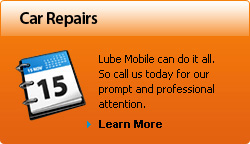Everyday Safe Driving Tips
Every day when we get behind the wheels of our cars we take control of powerful and potentially lethal machines. This is not something that most of us like to think about. To ignore it though is to risk turning a simple trip to the shops, or to pick up the kids from school, into a life threatening journey. There is no need for panic however; exercising caution, maintaining a good car service history and getting into some good driving habits will reduce your risk of accident dramatically. Here are our top tips for everyday safe driving.
Save the phone calls for later
Driving a car is a serious business and it demands your full attention. That means no more treating it as if it were your office. Making phone calls while driving can be very dangerous, so save the phone calls for later. Using a hand held phone while driving is not only dangerous but also illegal, so you certainly should not be doing that. If you absolutely have to make or take a call, then make sure you are using a hands free kit. It is far more sensible though simply to turn your phone off for the duration of your journey. And if you decide en route that a call cannot wait, then find a safe place to park before reaching for your phone.
Don’t get too close
Always make sure that you keep a gap between you and the vehicle in front. Remember that the faster you are travelling the bigger the gap should be. A good way to judge the gap is to make sure that you are at least two seconds behind the car in front. This means that as your speed increases so will the gap. Allow a longer gap at night, in adverse weather and when road conditions are poor. At traffic lights and in stationary traffic never get so close that you cannot see the rear tyres of the vehicle in front.
Indicate early
One of your key responsibilities as a driver is to make sure that you do not do anything to endanger other road users. Using your indicators properly will go a long way to achieving this goal. Make sure that you indicate early — a good thirty seconds before you make a turn — so that no pedestrians or drivers are caught by surprise. If you change your mind at the last second and don’t have time to have time to do this, then you shouldn’t be making the turn at all. Keep on going and find somewhere to turn your vehicle safely or take an alternative route.
Keep your car in good condition
Safe driving requires a safe vehicle; so make sure you keep your car in good condition. Implement a maintenance schedule that covers things such as checking your fluids and tyres. Make sure your vehicle is regularly and professionally serviced and attend to any car repairs as soon as a problem develops. Early detection and repair will reduce the risk of minor problems turning into serious issues that cost you money and risk your safety.




